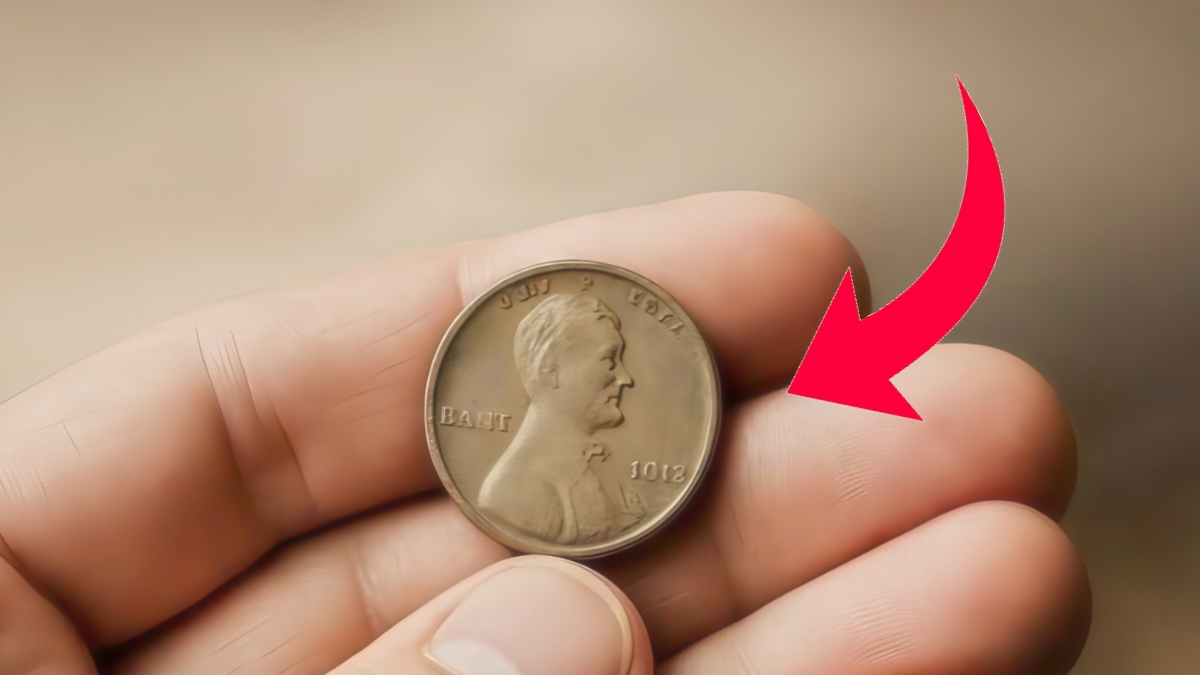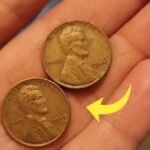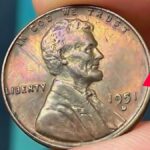The Lincoln Wheat Penny may seem like just another copper coin, but some of these rare cents can be worth more than luxury cars or even houses. One of the most famous among them is the 1943 Copper Lincoln Penny, which recently gained attention again after a collector valued it at over $305,000. Even more surprising is the fact that this coin wasn’t in a museum or private collection, but found in casual circulation—reminding us that historical treasures often lie hidden in plain sight.
Lincoln Wheat Penny History and Design
The Lincoln Wheat Penny made its debut in 1909 to honor the 100th birth anniversary of President Abraham Lincoln. It became the first U.S. coin to feature a real historical figure. Designed by sculptor Victor David Brenner, the front displays Lincoln’s profile while the reverse shows two wheat stalks representing agriculture. This wheat design was in use from 1909 until 1958 and quickly became a staple of American pockets and drawers. Over the years, it transformed from a regular coin to a cultural symbol of national pride, unity, and history.
1943 Copper Penny Value and Background
In 1943, the U.S. Mint shifted penny production to steel due to wartime copper shortages. Most 1943 pennies are silver in color and stick to magnets. However, a few were accidentally struck using leftover copper blanks from 1942. These copper pennies are among the rarest in American history. One such 1943 Copper Penny, in excellent condition, has recently been valued at $305,000. The coin’s worth isn’t just about metal or age—it’s about how rare and historically significant it is.
1943 Copper Penny Rarity Details
The 1943 Copper Penny is known to exist in only limited numbers. The Philadelphia Mint has around 15 verified examples, while the San Francisco Mint produced just five or six. The rarest version is from the Denver Mint, with only one known to exist. These coins were not meant to be produced in copper that year, which makes their accidental creation such an important event in U.S. minting history. A 1943-D Copper Penny once sold for $840,000, showing how high collectors are willing to bid for true rarity.
Other Valuable Wheat Penny Variants
Though the 1943 Copper Penny gets the spotlight, several other Lincoln Wheat Pennies are worth thousands. The 1944 Steel Penny, another accidental minting error, can fetch up to $125,000. The 1909-S VDB penny, the first edition made in San Francisco with designer initials, is valued up to $150,000. The 1955 Doubled Die Error, known for its unique doubling on the front, ranges between $25,000 to $60,000. Even less rare but still collectible coins like the 1931-S or 1914-D can bring in $5,000 to $75,000 depending on condition.
How to Identify Rare Wheat Pennies
Start by checking the date. A genuine 1943 Copper Penny should be non-magnetic. If it sticks to a magnet, it’s likely steel. Weighing the coin can also help: copper versions weigh around 3.11 grams, while steel ones weigh about 2.7 grams. The color may offer clues as well, with copper coins maintaining a red-brown tone even after years of aging. It’s important to avoid counterfeits, which are often made by copper-plating steel coins or altering other coins. When in doubt, professional grading is essential.
Where to Authenticate Your Coins
Authentication ensures that your coin is genuine and helps determine its market value. Trusted services like the Professional Coin Grading Service (PCGS), Numismatic Guaranty Corporation (NGC), and American Numismatic Association Certification Service (ANACS) are top choices. They not only verify authenticity but also assign a condition grade, which can significantly influence price. With scams and fakes increasing in the collector world, certification from these bodies adds confidence for both sellers and buyers.
Why These Coins Are Still in Circulation
Despite their value, rare coins like the 1943 Copper Penny still occasionally turn up in circulation. Many people don’t inspect their coins closely and mistake copper versions for common steel ones or even dimes. Estates are sometimes liquidated without close inspection, allowing rare coins to re-enter the public through banks or cash transactions. Some are even found in coin rolls, old jars, and forgotten piggy banks. These accidental discoveries prove how easy it is to overlook incredible value in everyday change.
Real-Life Discoveries and Sales
In 2019, a student in a high school cafeteria discovered a 1943 Copper Penny that later sold for $204,000. In 2018, an inherited collection included a rare 1943-S Copper Penny that fetched $168,000. Another collector found a 1909-S VDB penny in a bank roll and sold it for $72,500. At a 2014 estate sale, a jar held a 1944-D Steel Penny that later sold for $115,000. These discoveries aren’t just flukes—they show that rare coins continue to circulate quietly, waiting to be recognized.
How to Find and Preserve Valuable Pennies
Collectors often start by searching penny rolls from banks. Checking old family coin jars and buying from estate sales or flea markets can also yield surprises. Coin-counting machines sometimes reject rare coins—so check the trays. To preserve a valuable find, avoid cleaning it, which can lower its value. Store coins in acid-free holders in a dry, cool place, and always handle them by the edges. Keep records of where and how each coin was acquired to maintain documentation and increase potential resale value.
Lincoln Wheat Pennies as Long-Term Investments
The rise in value of rare Lincoln Wheat Pennies makes them a smart long-term investment. A 1943 Copper Penny once worth $10,000 in the 1970s now commands over $300,000. As demand for rare American coins grows globally, these small cent pieces continue to outperform many traditional assets. The thrill of the hunt, combined with the potential return, makes coin collecting both exciting and financially rewarding for enthusiasts and investors alike.
Disclaimer: The information in this article is for educational and informational purposes only. Valuations and investment decisions should be verified through certified numismatic experts or professional coin graders. We do not guarantee the accuracy of estimated coin values as they may vary based on market trends and condition.






Bakri palan karna he mujhe
Loan
सभी सरकारी यौजना होती तो गरीब के लिये लेकिन इसका लाभ श्रीमंत लोग लाभ लेते है
Comming soon 1.20 lakh
Please 🙏